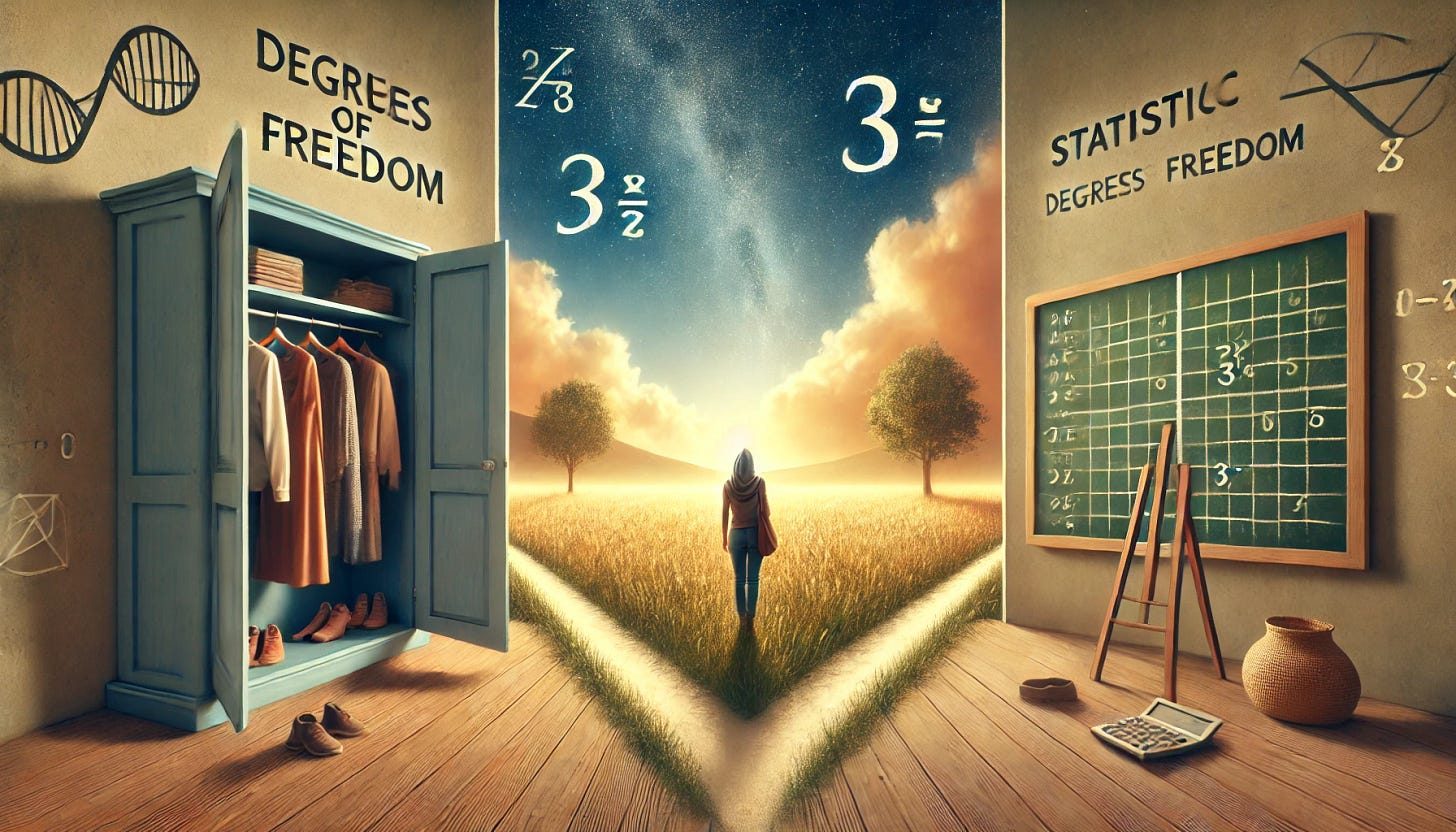I've always been fascinated by the concept of freedom. As a child, the idea seemed simple: freedom was the ability to do whatever I wanted. Running through a football ground, choosing which game to play, or deciding how late to stay up on a summer night—all these felt like pure expressions of being free. But as I grew older, I began to realize that freedom is nuanced, shaped by unseen boundaries and constraints.
One morning, I stood in front of my closet, contemplating what to wear. The array of shirts, pants, and shoes offered countless combinations. On weekends, I could throw on anything—a bright t-shirt, comfy jeans, or that old sweater that feels like a hug. My choices felt limitless. But on weekdays, the reality of a dress code at work narrowed my options considerably. Suddenly, my freedom to choose was confined within certain parameters. This simple daily routine made me ponder the degrees of freedom we experience in life.
These thoughts took me back to a statistics class I once took, where the term "degrees of freedom" was a frequent topic. At first glance, it seemed like a dry mathematical concept, but I started to see parallels between statistical degrees of freedom and the philosophical idea of choice within constraints. As luck would have it, I started my academic journey teaching statistics.
In statistics, degrees of freedom refer to the number of values in a calculation that are free to vary while still satisfying certain conditions. Imagine I have three numbers that must add up to ten. I can freely choose the first two numbers—say, 4 and 3—but the third number is no longer a free choice; it must be 3 to meet the total sum of ten. Here, I have two degrees of freedom. This mathematical principle mirrors the way our choices work in life: we have freedom, but within certain limits.
Reflecting on this, I realized that many aspects of our lives operate under similar constraints. When planning a dinner with a set budget, I can choose various ingredients and dishes, but I can't spend more than I have. My culinary creativity is free, but only up to the point where it meets the financial boundary. Just like in statistics, some variables are under my control, while others are determined by external factors.
Even the laws of nature impose limits on our freedom. No matter how much I might want to fly by flapping my arms, gravity and biology say otherwise. Social norms and laws further shape our possibilities. I might feel like singing loudly in a quiet library, but respect for others and library rules hold me back. These constraints don't necessarily diminish our freedom; instead, they define the context in which our freedom operates.
Understanding degrees of freedom, both philosophically and statistically, has given me a new perspective on decision-making. It's about recognizing the space in which we can act freely and the boundaries that guide those actions. In life, this awareness helps me navigate choices more thoughtfully, understanding that while I can't control every variable, I can make the most of those I can influence.
In statistics, acknowledging degrees of freedom is crucial for accurate analysis. It ensures that models and tests are valid and that conclusions drawn from data are reliable. Just as in life, overlooking the constraints can lead to errors and misunderstandings.
This interconnectedness between choice and constraint, freedom and limits, is a constant dance. It reminds me that while I may not have absolute freedom, I have the agency to make meaningful choices within the parameters set before me. Embracing this concept has made me more mindful of the decisions I make and appreciative of the freedoms I do have.
So, the next time I stand before my closet or face a complex problem, I'll think about the degrees of freedom at play. It's a gentle reminder that freedom isn't just about limitless options but understanding and navigating the boundaries that shape our world. It's within these degrees of freedom that we find purpose, creativity, and the true essence of choice.



......liked the analogy. Can be directly taken to the class room.